STEM, the word stands for Science, Technology, Engineering, and Mathematics. It is a way of education where the subjects that are mentioned above are taught in coherence with each other instead of in isolation. It focuses to make a bridge between the learning gap and experience through child-centric materials with the aim of making children active learners. The following article provides information on STEM Education, Incorporating STEM Education In Different Ways, Learning Environment and STEM and more!
STEM teaching is an interdisciplinary way of learning where different concepts of science, technology, engineering, and mathematics are taught. By their very nature, early childhood settings are primed to support STEM learning. STEM is hands-on experienced and exploration-based learning that informs us about the world around us. STEM activities teach creativity, problem-solving, life skills, ingenuity, resourcefulness, patience, and curiosity. STEM helps to shape the future as our world grows and changes. Here we will shortly discuss the different topics of STEM and how to help it in children’s development.
- Science: Science gives knowledge about different inventions around the world and also this process helps children by assisting them to work through exploring, gathering data, looking for relationships and patterns, and generating explanations and ideas using evidence.
- Technology: To know different and new technology is very important for children. Technology is a tool that has been designed to meet human needs such as balance scales to compare weights, lenses to look closely at living things, and digital tools like computers and tablets. And children must know the various techniques to be innovators in the future.
- Engineering: The process of designing tools, systems, and structures that help humans meet their needs or solve problems. It helps children to be more methodical, constructive, and logical-driven.
- Mathematics: The study of quantities (how many or how much), structures (shapes), space (angles and distances), and change. Mathematics would definitely help them to have logical thinking.
STEM education helps children to be critical thinkers, also helps to increase science literacy, and makes the next generation of children capable of being innovators. Innovation is necessary for any country as it leads to new products and processes that make our economy sustainable. This innovation and science literacy depends on a solid knowledge base in the STEM areas. That is why every child should be trained by stem education. At different times, children may engage with science, technology, engineering, and mathematics separately or in combination. For example, when a child builds a tower with blocks, he or she acts as an engineer as he or she tries to make a tall, yet stable structure. That child also takes on the disposition of a scientist when he or she explores how blocks of different materials, shapes, and textures affect the strength and stability of the tower. That child might also use mathematics and technology as he or she uses tools to measure the heights of the towers. Children are born learners and they have all the qualities in them to be adapted to STEM education. What is needed is the right training support and help from educators/parents to be more equipped with STEM education.
How To Incorporate STEM Education In Different Ways:
- STEM experiences can be planned. Carefully planned activities and materials can inspire and incite children’s natural desires to explore and can lead to spontaneous teaching and learning. STEM teaching also can be unplanned.
- Because at any moment of time teaching can be occurred. Suppose when children are playing with blocks and the teacher is helping to make the building with the blocks then it is a kind of engineering teaching that a teacher helps to understand the child.
- Engage children with thoughtful and intentional learning activities that invite them to engage in STEM. (e.g., building ramps, constructing a marble run, planting a garden, using a magnifying glass)
- You can also plan activities that prompt investigation and exploration. e.g., rolling different kinds of objects down ramps, comparing weights of objects using a balance scale, etc.
- Guide exploration with open-ended questions. What, why, and how questions have the potential to encourage deeper thinking, thoughtful answers, and continued exploration. Give them more chances to ask and explore more things
- STEM disciplines are closely intertwined. For example, when a child examines a piece of fruit, he or she may taste it, classify its shape, and count its seeds, engaging in both science and math exploration. So, every small thing in their activity might be related to STEM.
So, teachers have to be ready with planned and unplanned teaching so that they can guide the students at any moment of learning of STEM education.
Teachers should make the learning environment appropriate for STEM education.
- Teachers can give activities and materials that give children opportunities to find out how things work. It will help them to observe, explore, ask questions, solve problems, design, collaborate, build, and think critically.
- A teacher can engage the children in science, technology, engineering, and mathematics together or separately. For example, if teachers provide a Sensory Table Center for sinking and floating investigations. Children can sort, count, and compare the characteristics of items that sank and items that floated. Here all the wings of STEM education will be worked together.
- Teachers have to give activities that are interesting and will grab the little one’s attention so that they feel engaged and happy while doing the activity.
- Teachers should also give such works which need interaction with peers so that with STEM education they learn to socialise.
- To make the process easy and to make the children habituated to STEM, a teacher can use STEM vocabulary with the children. Stem vocabulary is nothing but using some words which are very much related to STEM education, such as longer, shorter, higher, more, fewer, follow, add, construct, etc. Children learn words gradually over time and as they hear and use words in different contexts. They continually deepen their understanding of words in parallel with related concepts. For example, they learn what the verb sink means in tandem with learning what the action of sinking is. As we all know that only change is constant, likewise, the world around us is also changing and nowadays digital technology is overpowering us. The whole job sector is changing its properties. Sometimes new jobs are emerging sometimes old jobs are getting disappeared and the entire eligible population is rushing to cope with the changes. The difference between the demands of employers and the skills of employees is increasing. It is important to be focused on STEM education which is learning Science, technology, engineering, and mathematics are necessary to shorten the gap. It is said that critical thinking, creativity, cultural awareness, collaboration, and problem-solving attitudes will be very much deciding factors of success in recent times of globalisation and automation when jobs become fluid. Nowadays, people are experiencing working in different sectors in a single lifetime. Many people are working in a space where they have never worked before. So, now in this situation making the children more equipped with stem education is mandatory to make them eligible for the future, to make them innovators, and to make sustainability in our country’s economy.
STEM learning is also important for children as it caters to critical thinking and problem-solving attitude. Science literacy and knowledge about technology help them to be innovators in the future. Mathematics would definitely help them to have logical thinking. That is why for having all-around growth in children, STEM education is important for them also.
Further Reading
STEM: Teaching Guide For Educators - The following article provides information on Understanding STEM, How To Teach STEM, the Benefits Of STEM, Stem Activities and more.
Examples of STEM Experiences - The following article provides examples of learning experiences that introduce Science, Technology, Engineering and Mathematics through fun and engaging activities.
Introducing STEM To Children In Early Childhood Settings - The following article provides information for educators looking for ways to get their learners talking about STEM, here are a few ways to get started.
References:
- Engaging Children in STEM
- Use Learning Centers to Engage Children In STEM
- Integrate STEM Vocabulary
- What Does STEM Mean In Early Childhood?
- STEM Starts Early!


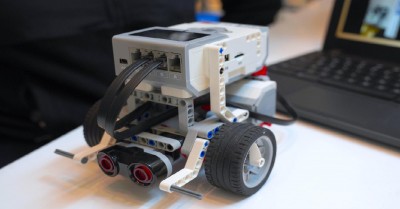


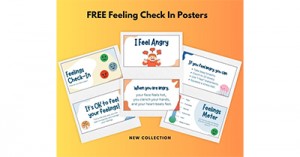
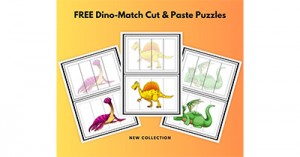
 Open ended questions cannot be responded to with one word answers such as yes or no. These types of questions enables a child to provide
Open ended questions cannot be responded to with one word answers such as yes or no. These types of questions enables a child to provide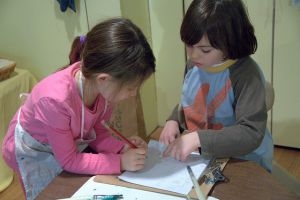 During your child’s preschool years, an important milestone begins to emerge. This is the development of pre-writing skills. Pre-writing skills are used to encourage, develop
During your child’s preschool years, an important milestone begins to emerge. This is the development of pre-writing skills. Pre-writing skills are used to encourage, develop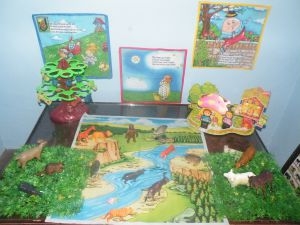 Open ended materials enables children to play freely. They are objects that have no rules to follow, use or function. Raw materials that can be
Open ended materials enables children to play freely. They are objects that have no rules to follow, use or function. Raw materials that can be An Acknowledgment of the Country is a way of showing respect for the Traditional Owners and can be given by both non-Indigenous people and Aboriginal
An Acknowledgment of the Country is a way of showing respect for the Traditional Owners and can be given by both non-Indigenous people and Aboriginal Language plays an important role in a child’s development. It enables a child to communicate effectively with their family, learn at school, socialize with friends,
Language plays an important role in a child’s development. It enables a child to communicate effectively with their family, learn at school, socialize with friends,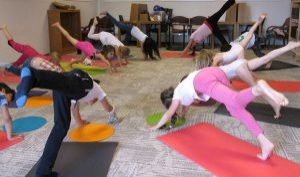 Like adults, children have to deal with their own stress in life. Moving house, starting a new school, preparing for a new sibling - these are
Like adults, children have to deal with their own stress in life. Moving house, starting a new school, preparing for a new sibling - these are Playdough is such a versatile material. It provides numerous benefits to children as they manipulate it, it is safe and soothing and provides children with
Playdough is such a versatile material. It provides numerous benefits to children as they manipulate it, it is safe and soothing and provides children with Teaching children about sustainability enables them to appreciate and respect the natural environment. Early childhood services can provide meaningful hand on learning experiences in order
Teaching children about sustainability enables them to appreciate and respect the natural environment. Early childhood services can provide meaningful hand on learning experiences in order Recycling is an important concept that teaches children to care for the environment. It encourages children to be responsible and show a growing appreciating for
Recycling is an important concept that teaches children to care for the environment. It encourages children to be responsible and show a growing appreciating for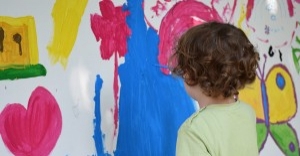 When children apply paint to paper, glue things together, or pound a lump of clay, they experiment with colour, shape design and texture.
When children apply paint to paper, glue things together, or pound a lump of clay, they experiment with colour, shape design and texture.



